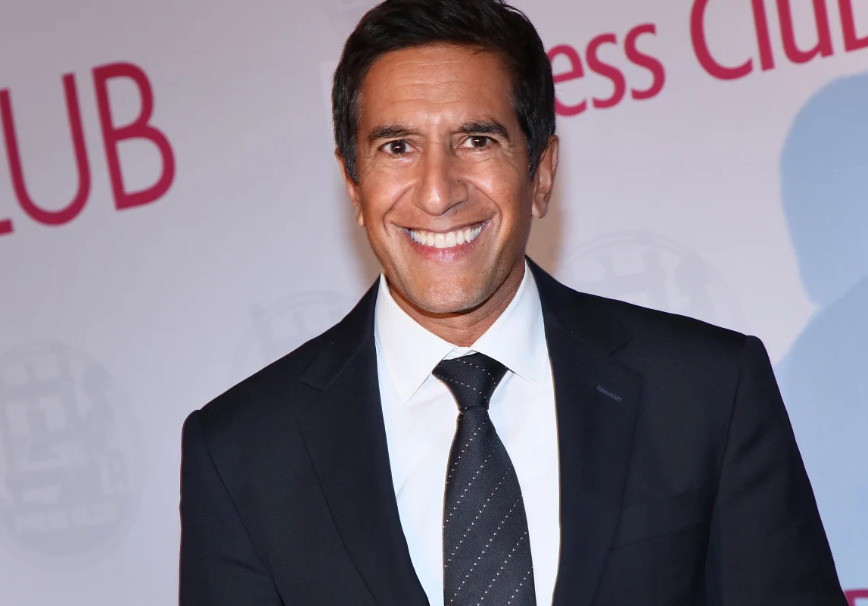
Peter Zeihan: Europe Goes Nuclear
We’ve got two major developments in Eurasia. We’re talking about Ukraine disabling two ships in the Caspian Sea and Poland getting EU approval to build…
Thought Leader: Peter Zeihan

Dr. Sanjay Gupta, CNN correspondent, world traveler and practicing neurosurgeon, considers himself a healthy guy: He exercises and lives an active life, keeps his mind stimulated and eats well. But, like millions of Americans, he has a family history of Alzheimer’s disease. So when he began filming his new documentary, “The Last Alzheimer’s Patient,” Gupta wanted to know just how great his risk was and if, at age 54, he was beginning to show any signs of the disease.
He underwent hours of high-tech assessments with a neurologist and has embarked on a mission to maintain his brain health — not with medication, but with surprisingly simple changes to his daily routine. Here are Gupta’s top tips for keeping your brain healthy.
Gupta has always been careful to eat a balanced, nutritious diet. But after visiting the pioneering neurologist, Dr. Richard Isaacson, at the Institute for Neurodegenerative Diseases of Florida, Gupta has cut out meat altogether. “The big differences I’ve made really revolve around eating,” he tells Yahoo Life. “I’m not eating meat. I eat mostly plants, mostly whole foods and I don’t eat too much.” In fact, Gupta says his diet is now primarily vegan.
That’s because certain foods — including dairy and meat, especially red meat — contribute to inflammation throughout the body. Inflammation wreaks havoc on the brain, according to Harvard Health, contributing to the development of Alzheimer’s plaques. Even before there are signs of dementia, inflammation can impair the brain, particularly its executive functioning, or ability to control and coordinate thoughts, emotions and behaviors.
Inflammation has many causes, but, in Gupta’s case, “the inflammation in my body was almost entirely due to my diet,” he says. Gupta was surprised by the results of the blood tests he underwent. “It’s sort of a testament to how pro-inflammatory meat really is,” he adds.
Isaacson encouraged Gupta to keep up his daily walks with his three dogs, but told him to step it up by wearing a weighted rucksack (an activity that’s been dubbed “rucking”). Exercise is great for brain health to begin with, according to the Alzheimer’s Society, but rucking has unique benefits. Adding weight to your walk makes it both aerobic and strength training, which combined are helpful for reducing what’s known as visceral fat. It also strengthens the core and spine.
A “big problem” contributing to Alzheimer’s, Gupta says, is visceral fat. “It’s the fat inside the body that you wouldn’t be able to pinch,” sometimes known as deep belly fat, though it also develops around organs, he explains. A landmark 2023 study found a close link between visceral fat and Alzheimer’s disease. “So using a rucksack and walking in a weighted way helps to decrease visceral fat and increase bone, and all of these things make you less insulin resistant.”
Some doctors, including Isaacson, suspect that insulin resistance is one of the causes of Alzheimer’s because it can trigger the development of the disease’s telltale amyloid plaques. “It’s really insulin resistance that’s probably the most objective and important outcome measure that Richard [Isaacson] was looking for,” Gupta says. Insulin resistance can also hamper executive functioning, so keeping it in check through exercise and a healthy diet can improve your day-to-day brain health, as well as helping to reduce Alzheimer’s risks.
As part of the study he’s taking part in through Isaacson’s clinic, Gupta has started keeping a food diary and wearing a continuous glucose monitor, a wearable device that tracks changes in his blood sugar (or glucose) throughout the day. Blood sugar spikes can contribute to insulin resistance and, thus, Alzheimer’s risk.
“There are foods that definitely spiked my blood sugar that surprised me, and others that I thought would spike it and did not,” Gupta says. He’s discovered that chapati — a wheat and ghee flatbread that’s been a staple in Gupta’s Indian-American family his whole life — is a major trigger for him. “More than anything else, including ice cream,” he says. Gupta has stopped eating chapati, but says that cutting out everything he loves that can spike his blood sugar isn’t necessarily the answer. “I understand that sweet spot,” he says.
While speaking to Yahoo Life, Gupta was strolling around his office wearing a set of toe spacers, which to him feel like “rings between your toes.” The point of his new accessory is to keep his brain and his feet in active communication.
“The nerves that run from the spinal cord to the legs and feet are some of the longest in the body,” Gupta explains. “Because most of us are walking around with shoes on, we’re not simulating those nerves — even walking around barefoot would make a difference — so [the goal is] trying to keep those nerve pathways active.” Doing so helps to preserve proprioceptors, which are nerve endings in the brain responsible for our sense of balance and coordination — something that can suffer as we age. Gupta wears the toe spacers for about 10 to 15 minutes a day, and plans to work his way up to longer stretches of toe stimulation.
Isaacson’s testing showed that the balance of Gupta’s levels of two fatty acids — omega-3 and omega-6 — were out of whack. His omega-3 levels were sufficiently high on their own, but they were too high for his lower levels of omega-6. The two fatty acids, which together play a crucial role in brain development and health, help to counteract the effects of inflammation and cell damage from oxidative stress.
At Isaacson’s suggestion, Gupta now takes omega-packed fish oil to optimize his levels. Questions have recently been raised about whether fish oil supplements live up to their hype, and many were recently found to be rancid. Gupta himself has been skeptical of the heart health benefits of the supplements, but was convinced by the potential brain benefits.
Even for a neuroscientist like Gupta, having his brain inspected was nerve-wracking. “It’s intimidating and very meta to have your brain assessed,” Gupta says. And, until recently, Alzheimer’s risk assessments before symptoms develop felt particularly daunting because it was easy to think, “‘What would I do about this even if the tests showed abnormalities?’ There was no clear path forward,” says Gupta.
But now, thanks to preventive neurologists like Isaacson, there are a number of things that can be done to maintain brain health, and most of them can be done from your home at a relatively low cost. “These lifestyle changes … it’s not nothing, but it’s doable,” Gupta says. You can even do a number of the cognitive tests that Gupta took by joining Isaacson’s study through an app Isaacson and his team developed called Retain Your Brain.
It’s too soon to say what difference Gupta’s new habits are making for his brain health, but he’s hopeful. And for good reason: Some other patients in the trial have seen not only improvements, but the reversal of signs of Alzheimer’s in a matter of 14 months. The possibility is tantalizing: “You want to have a sharper brain by the holidays? You could do it, with no therapy or medication interventions,” Gupta says.
Peter Zeihan: Europe Goes Nuclear
We’ve got two major developments in Eurasia. We’re talking about Ukraine disabling two ships in the Caspian Sea and Poland getting EU approval to build…
Thought Leader: Peter Zeihan
Dr. Sanjay Gupta’s Top Health Stories of 2025
From the resurgence of measles to a new way to treat pain, 2025 was a challenge for public health while still offering moments of hope. Sanjay…
Thought Leader: Sanjay Gupta
Ian Bremmer: The state of global conflict in 2025
On GZERO World, Ian Bremmer takes a hard look at the biggest global crises and conflicts that defined our world in 2025 with CNN’s Clarissa…
Thought Leader: Ian Bremmer

